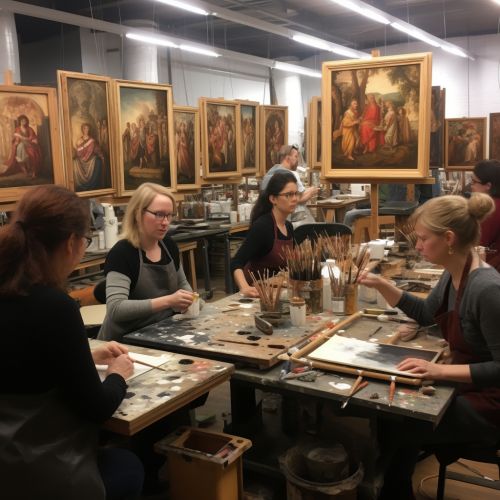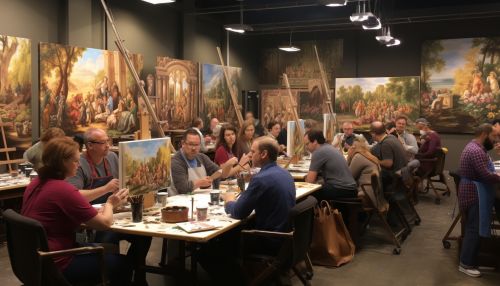Leonardo da Vinci
Early Life
Leonardo da Vinci was born on April 15, 1452, in the small town of Vinci, located in the Tuscan region of Italy. He was the illegitimate son of a local notary, Piero da Vinci, and a peasant woman named Caterina. Despite his illegitimate status, Leonardo was educated in the basics of reading, writing, and arithmetic.
Artistic Training
At the age of 14, Leonardo began an apprenticeship with the noted artist Verrocchio in Florence. Here, he was exposed to both theoretical training and a wide range of technical skills including drafting, chemistry, metallurgy, metal working, plaster casting, leather working, mechanics and carpentry. Leonardo's early work in Verrocchio's workshop, such as the Baptism of Christ, already showed advanced artistic skills and innovative techniques.


Career and Works
Leonardo's career spanned over four decades, during which he created some of the most famous and iconic artworks in history. These include the Mona Lisa, The Last Supper, and the Vitruvian Man. His work was characterized by his innovative use of perspective, his mastery of light and shadow, and his detailed anatomical drawings.
The Last Supper
One of Leonardo's most famous works, The Last Supper, was commissioned by Ludovico Sforza, the Duke of Milan, for the refectory of the Convent of Santa Maria delle Grazie in Milan. The painting depicts the moment when Jesus announces that one of his disciples will betray him. Leonardo's innovative use of perspective and his ability to capture the emotional reactions of the disciples made this painting a masterpiece.
Mona Lisa
Perhaps the most famous painting in the world, the Mona Lisa was created by Leonardo da Vinci around 1503-1506. The painting is renowned for the mysterious smile of the sitter, whose identity has been a subject of debate for centuries. The Mona Lisa is also notable for Leonardo's skillful use of sfumato, a technique of soft, heavily shaded modeling.
Scientific Studies
In addition to his artistic work, Leonardo da Vinci was also a prolific scientist, making significant contributions to fields such as anatomy, civil engineering, optics, and hydrodynamics. His scientific studies were recorded in a series of notebooks, known as the Codex Atlanticus, which contain detailed observations, sketches, and theories.
Later Life and Death
In his later years, Leonardo accepted an invitation from King Francis I of France to live and work at the Clos Lucé near the king's residence in the Loire Valley. He spent the last three years of his life here, accompanied by his assistant and companion, Francesco Melzi. Leonardo da Vinci died on May 2, 1519 at the age of 67.
Legacy
Leonardo da Vinci's influence on art and science cannot be overstated. His innovative techniques and his relentless curiosity and experimentation have made him a symbol of the Italian Renaissance, and his works continue to inspire artists and scientists today.
